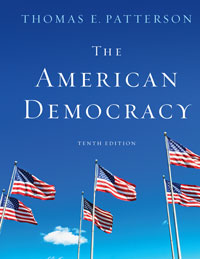1 A) It became clear during the presidential campaign of James Monroe in 1820 that political parties had become powerful and that competition between them would continue to be fierce. B) George Washington believed that political parties would be necessary to temper the power of individual candidates, whom he feared would become like monarchs without an organization to control them. C) One of the two first parties was the Federalist Party, which sought to protect states' rights and the interests of small landowners and the states. D) There were no political parties in existence on a national level in the U.S. when the Constitution was written, but they evolved in part due to a political rivalry. E) Political parties did not develop in the United States until the late nineteenth century. 2 A) Thomas Jefferson B) James Monroe C) Andrew Jackson D) John Quincy Adams E) James Madison 3 A) coherent philosophy. B) opposition to the policies of the Jacksonian Democrats. C) opposition to Federalist policies. D) opposition to Republican policies. E) None of these answers is correct. 4 A) Grover Cleveland B) William McKinley C) Abraham Lincoln D) Franklin Roosevelt E) John C. Breckinridge 5 A) 1860 and 1932 B) 1896 and 2000 C) 1932 and 1896 D) 2000 and 1860 E) both 1860 and 1896 6 A) More voters identify with the GOP. B) More voters identify with the Democratic Party. C) More voters identify themselves as Independent. D) More voters identify with the Socialist Party. E) None of these answers is correct. 7 A) single-member districts and two competitive political parties. B) proportional representation and two competitive political parties C) single-member districts and three or more competitive parties. D) only two competitive political parties. E) proportional representation and three or more competitive political parties. 8 A) Realignment B) Reapportionment C) Dealignment D) Factionalization E) Apathy 9 A) Retrospective voting B) Sociotropic voting C) Split-ticket voting D) Straight-ticket voting E) Prospective voting 10 A) Jews and Catholics B) Catholics and white wealthy Americans. C) gays and lesbians. D) white middle-class Americans. E) women. 11 A) Bull Moose Party B) Right-to-Life Party C) Green Party D) Populist Party E) Reform Party 12 A) Democratic Party B) Republican Party C) Federalist Party D) Whig Party E) Progressive Party 13 A) BCRA B) 527 C) Swift Boat D) service E) Teflon 14 A) national level. B) state level. C) local level. D) international level. E) national and state levels. 15 A) Hispanics. B) women. C) evangelical Christians. D) men. E) African Americans. 16 A) organized from the top down. B) very centralized. C) loose associations of national, state, and local organizations. D) organized from the bottom up. E) loose associations of national, state, and local organizations, which are organized from the bottom up. 17 A) Bull Moose Party B) Prohibition Party C) Reform Party D) Populist Party E) e Republican Party 18 A) They often degenerate into mud-slinging contests. B) They are fertile ground for powerful special-interest groups. C) They weaken accountability, as elected officials blame others when things go wrong. D) All of these are disadvantages: They often degenerate into mud-slinging contests; they are fertile ground for powerful special-interest groups; and they weaken accountability, as elected officials blame others when things go wrong. E) None of these answers is correct. 19 A) Libertarian Party B) Populist Party C) Reform Party D) Green Party E) Socialist Party of America 20 A) single-member districts increase the stakes for the voter and result in a larger turnout than in the proportional representation system. B) voters will naturally seek the center of the political spectrum for fear of bringing extremist parties into the legislature. C) the proportional representation system encourages parties to move toward the median voter. D) if there are two parties, the parties can maximize their vote only if they position themselves at the location of the median voter. E) interest groups seek to influence government based on the popular opinion of the median voter.





